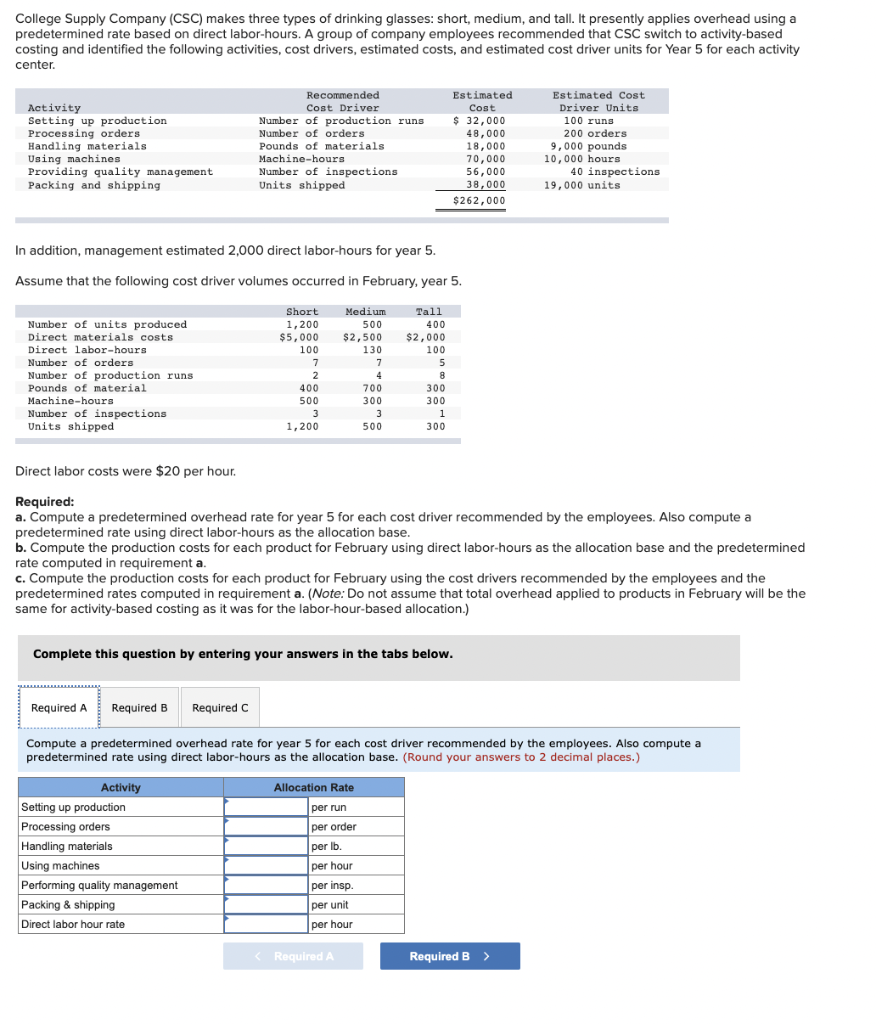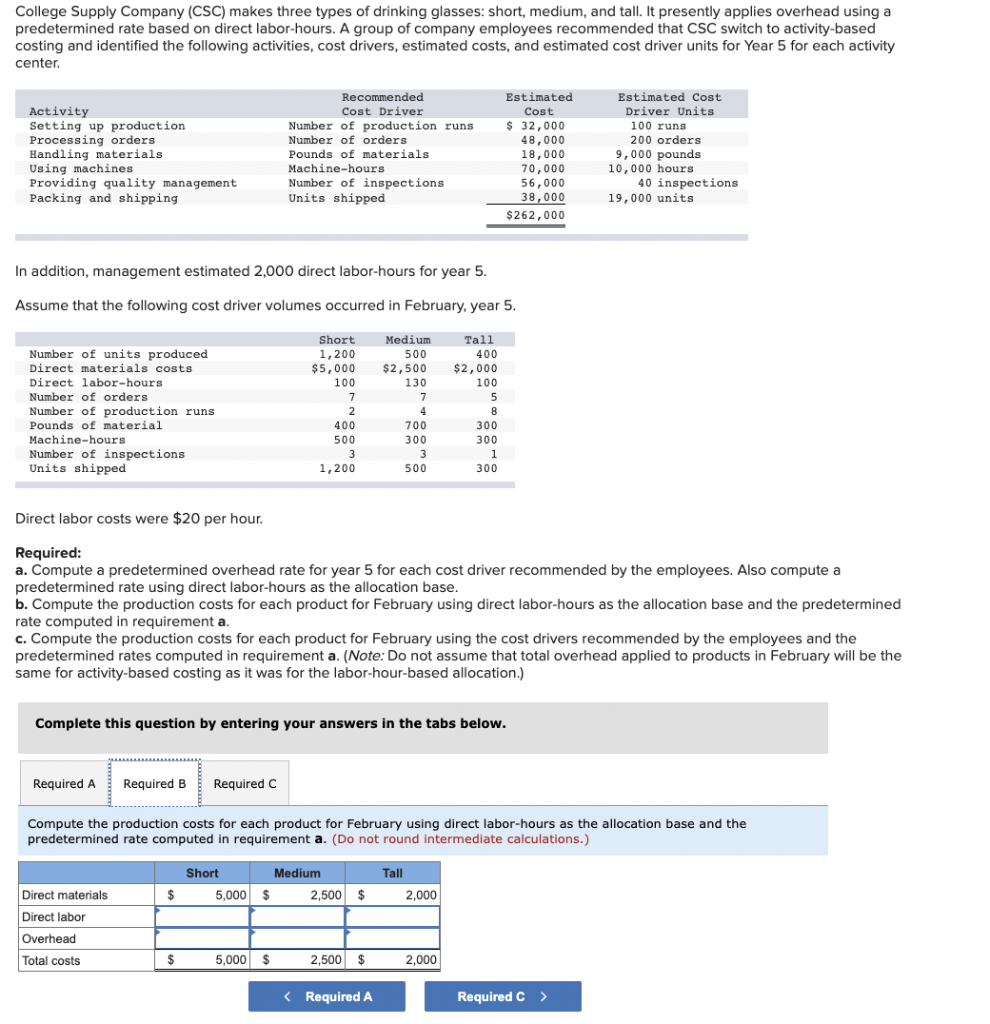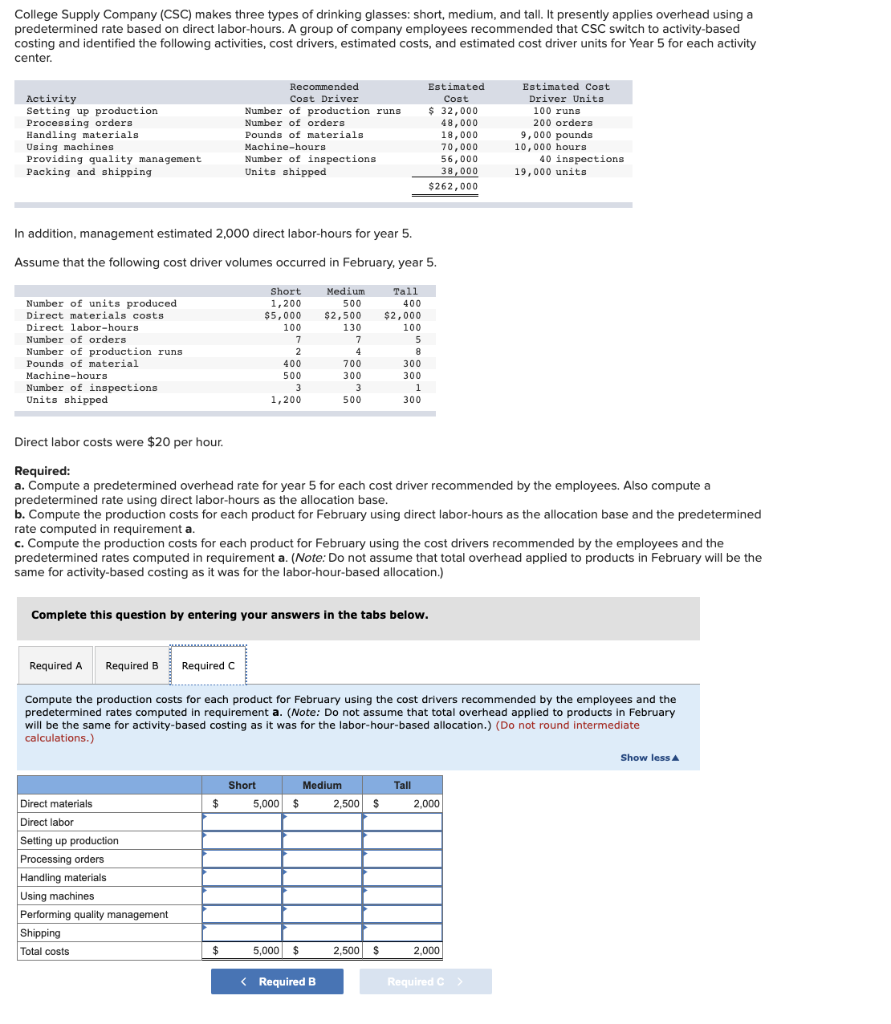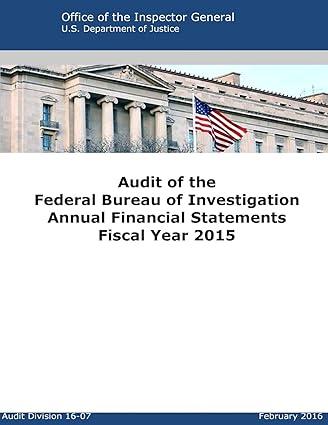


College Supply Company (CSC) makes three types of drinking glasses: short, medium, and tall. It presently applies overhead using a predetermined rate based on direct labor-hours. A group of company employees recommended that CSC switch to activity-based costing and identified the following activities, cost drivers, estimated costs, and estimated cost driver units for Year 5 for each activity center. In addition, management estimated 2,000 direct labor-hours for year 5. Assume that the following cost driver volumes occurred in February, year 5. Direct labor costs were $20 per hour. Required: a. Compute a predetermined overhead rate for year 5 for each cost driver recommended by the employees. Also compute a predetermined rate using direct labor-hours as the allocation base. b. Compute the production costs for each product for February using direct labor-hours as the allocation base and the predetermined rate computed in requirement a. c. Compute the production costs for each product for February using the cost drivers recommended by the employees and the predetermined rates computed in requirement a. (Note: Do not assume that total overhead applied to products in February will be the same for activity-based costing as it was for the labor-hour-based allocation.) Complete this question by entering your answers in the tabs below. Compute a predetermined overhead rate for year 5 for each cost driver recommended by the employees. Also compute a predetermined rate using direct labor-hours as the allocation base. (Round your answers to 2 decimal places.) College Supply Company (CSC) makes three types of drinking glasses: short, medium, and tall. It presently applies overhead using a predetermined rate based on direct labor-hours. A group of company employees recommended that CSC switch to activity-based costing and identified the following activities, cost drivers, estimated costs, and estimated cost driver units for Year 5 for each activity center. In addition, management estimated 2,000 direct labor-hours for year 5. Assume that the following cost driver volumes occurred in February, year 5. Direct labor costs were $20 per hour. Required: a. Compute a predetermined overhead rate for year 5 for each cost driver recommended by the employees. Also compute a predetermined rate using direct labor-hours as the allocation base. b. Compute the production costs for each product for February using direct labor-hours as the allocation base and the predetermined rate computed in requirement a. c. Compute the production costs for each product for February using the cost drivers recommended by the employees and the predetermined rates computed in requirement a. (Note: Do not assume that total overhead applied to products in February will be the same for activity-based costing as it was for the labor-hour-based allocation.) Complete this question by entering your answers in the tabs below. Compute the production costs for each product for February using direct labor-hours as the allocation base and the predetermined rate computed in requirement a. (Do not round intermediate calculations.) College Supply Company (CSC) makes three types of drinking glasses: short, medium, and tall. It presently applies overhead using a predetermined rate based on direct labor-hours. A group of company employees recommended that CSC switch to activity-based costing and identified the following activities, cost drivers, estimated costs, and estimated cost driver units for Year 5 for each activity center. In addition, management estimated 2,000 direct labor-hours for year 5. Assume that the following cost driver volumes occurred in February, year 5. Direct labor costs were $20 per hour. Required: a. Compute a predetermined overhead rate for year 5 for each cost driver recommended by the employees. Also compute a predetermined rate using direct labor-hours as the allocation base. b. Compute the production costs for each product for February using direct labor-hours as the allocation base and the predetermined rate computed in requirement a. c. Compute the production costs for each product for February using the cost drivers recommended by the employees and the predetermined rates computed in requirement a. (Note: Do not assume that total overhead applied to products in February will be the same for activity-based costing as it was for the labor-hour-based allocation.) Complete this question by entering your answers in the tabs below. Compute the production costs for each product for February using the cost drivers recommended by the employees and the predetermined rates computed in requirement a. (Note: Do not assume that total overhead applied to products in February will be the same for activity-based costing as it was for the labor-hour-based allocation.) (Do not round intermediate calculations.)









